FlatpanelsHD visited both LG Display and Samsung Display to explore their latest displays, prototypes, and technology. Here are our insights on the near-to-mid-term future of displays.
LG Display and Samsung Display are two of the largest, leading manufacturers of display panels for consumer devices, including TVs, monitors, phones, and various other devices from the likes of Apple, Asus, Dell, LG Electronics, Panasonic, Philips, Samsung Electronics, and Sony.
At CES 2024, FlatpanelsHD visited both of the companies' invitation-only showrooms. What stayed with us after the visits is that OLED technology is set to expand its reach, taking over new segments with brighter, faster, thinner and higher-resolution panels than ever before. Consumers will benefit from the intensified competition between the two giants.
Samsung Display has completely ceased LCD research, development, and manufacturing, selling patents and factories primarily to TCL CSOT, while LG Display still retains a single LCD factory.
As you may have heard, microLED is a promising new display technology, as is NanoLED, but for the near-to-medium term, neither company is discussing these potential alternatives. In fact, Samsung's microLED development is not under the purview of Samsung Display at all.
Brighter OLED TVs
If you have been following the many announcements from CES 2024, the revelation that OLED displays are set to get brighter this year should not come as a surprise.
Both LG Display and Samsung Display tout a peak brightness of 3000 nits on a 3% window for their 2024 MLA OLED and QD-OLED TV panels, respectively. However, the real-world performance of brightness on consumer TVs remains to be seen, but we expect it to be lower. Samsung Display stated that full-screen brightness of the 2024 QD-OLED TV panel reaches 300 nits, while LG Display stated 250 nits for full-screen brightness on the 2024 MLA OLED TV panel.
We witnessed a clear difference in the demonstrations, and it looks amazing. 3000 nits brightness should be reserved for very small elements in the picture, allowing stars to sparkle and lights to glow intensely, when the content has been mastered to these high peak brightness levels.
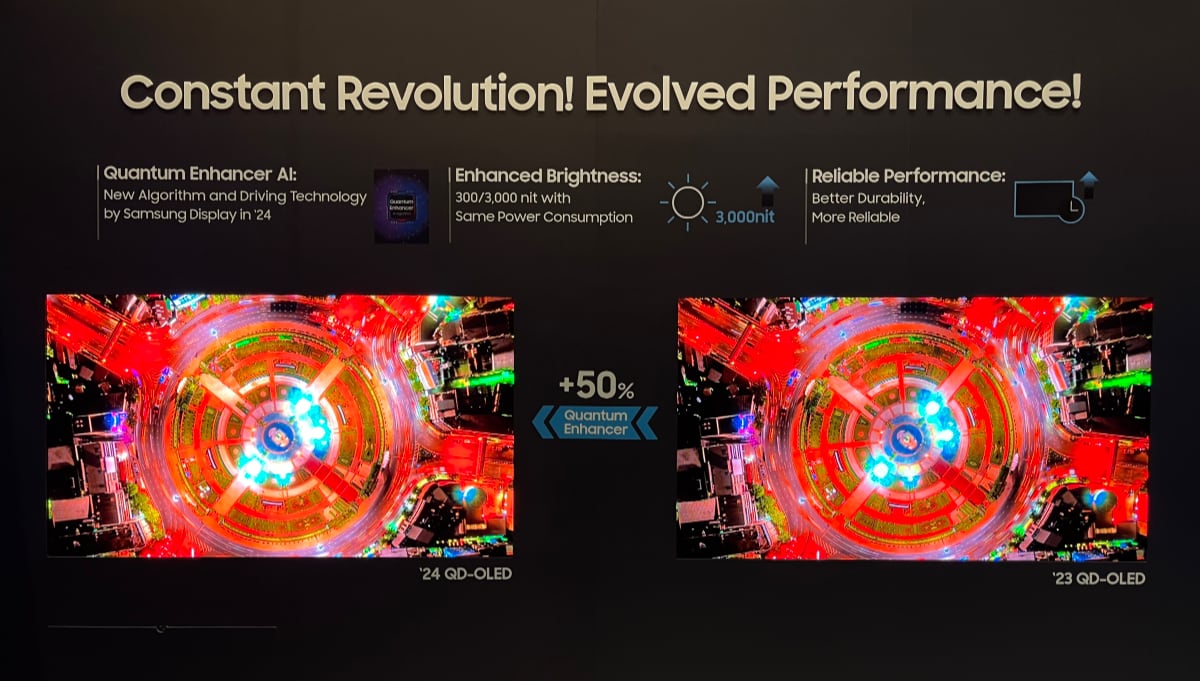
3000 nits is hard to capture on camera but here is the 2024 QD-OLED panel vs. the 2023 QD-OLED panel. Photo: FlatpanelsHD
In one demonstration, Samsung Display compared LG's WOLED panel (not the 2024 version, obviously) to its own 2024 QD-OLED to reveal that QD-OLED runs significantly cooler. As you may know, heat can accelerate aging of the OLED pixels.
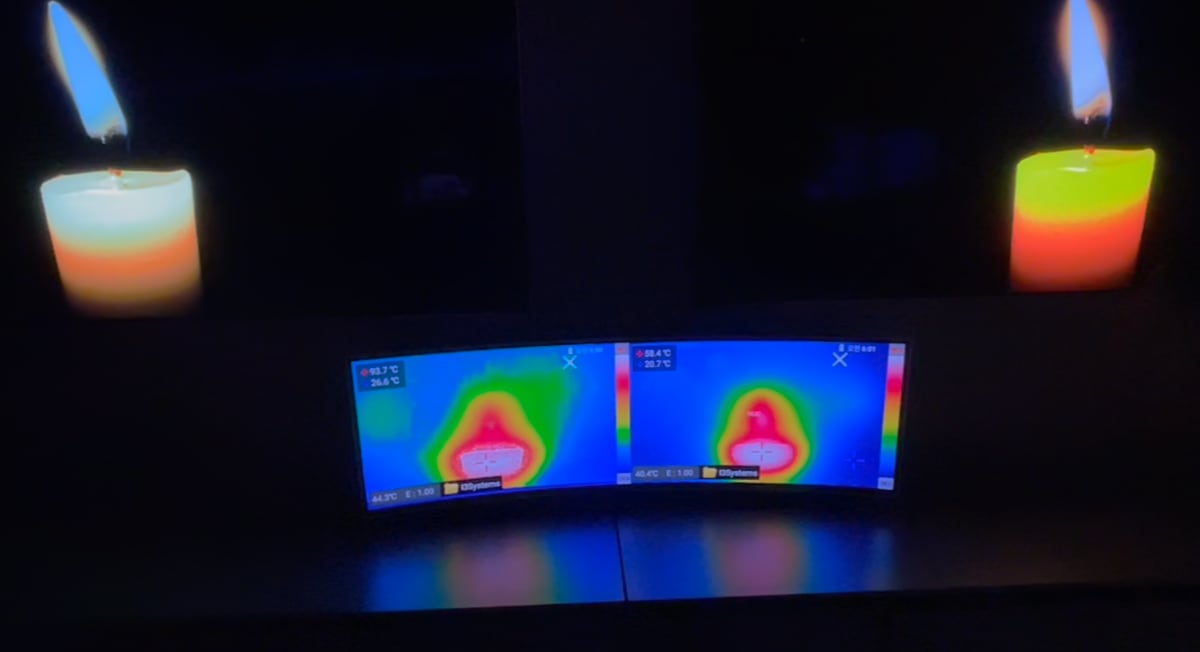
QD-OLED runs cooler than WOLED, according to Samsung Display. Photo: FlatpanelsHD
Meanwhile, LG Display showcased an even brighter MLA OLED panel intended for 2025. Unfortunately, as press, we did not get to see the early prototype, but industry insiders report (link) that it can currently hit 3700 nits. We will be surprised if it does not reach 4000 nits by the time it is ready in 2025.
Is that the limit for OLED TVs? Not at all. Advancements like blue PHOLED (phosphorescence) and plasmonics in the OLED material roadmap suggest that higher brightness, enabled by improved energy efficiency, is a trend likely to continue. Here, it is worth noting that OLED's brightness is actually achievable in small specular highlights, where such brightness levels are intended, as there are no zones, as in miniLED LCD TV, that need to be controlled and balanced not to blow out other parts of the picture.
Faster, higher-resolution OLED displays
There was an avalanche of new OLED monitors announced at CES 2024, including 32-inch 4K, 27-inch 1440p, ultrawide curved, and more. This marks a monumental improvement for PC gamers who, for years, have had to contend with subpar IPS LCDs. HDR gaming is finally possible on PCs.
LG Display has taken the lead in speed with the introduction of the first 480Hz panel, while Samsung Display offers a 360Hz panel. Considering OLED's inherent advantage of at least 50% for motion blur compared to an equally-specced LCD, even the 360Hz OLED panel should outperform a 500Hz LCD. The difference is perceptible to humans, and there is a compelling argument for even more in this article from Blur Busters, advocating for striving towards 1000Hz and beyond.
A 360Hz OLED visually outperforms a 500Hz LCD, and this year we're even getting 480Hz OLED. Photo: FlatpanelsHD
On the contrary, the 2024 OLED monitor panels still hover around 1000 nits peak brightness. While faster than the TV panels, they are not as bright.
Resolution is another crucial factor. LG Display and Samsung Display are both launching 32-inch 4K OLED monitor panels this year. Samsung Display, with its refined inkjet production method for QD ink, is gearing up to jump to 160ppi (pixels per inch) in 2025 or earlier, an increase from 140ppi with the 32-inch 4K QD-OLED panel. 140ppi is also what is required for a 65-inch 8K OLED TV, while 160ppi will enable Samsung Display to produce a 27-inch 4K QD-OLED monitor panel.
So we are getting there in terms of resolution.
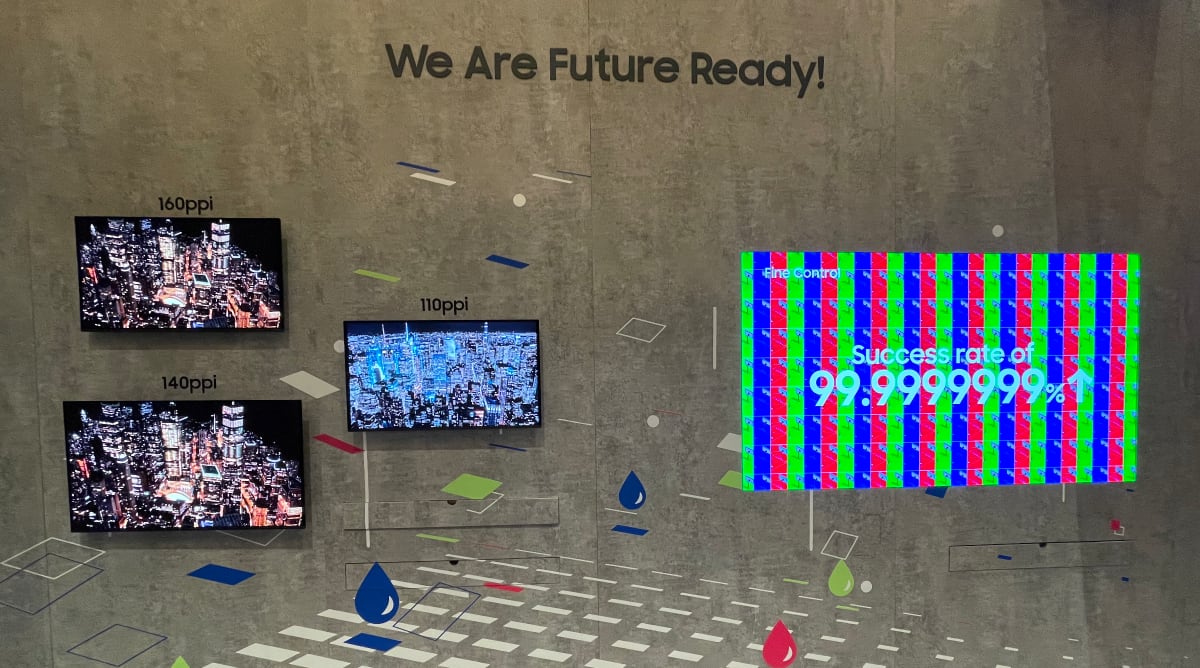
Samsung Display's 160ppi panel will enable it to launch a 27" 4K QD-OLED in 2025 or earlier. Photo: FlatpanelsHD
OLED is taking over in IT
But that is just external monitors. Samsung Display showcased its 'Ultra Thin' 0.7mm AMOLED panels (QD-OLED will not be used in anything under 27" for the time being), as seen below. These panels will make portable consumer devices even thinner and lighter.
The 'UT' OLED panels are built on an oxide backplane instead of amorphous silicon and feature reduced power consumption of up to 47%, according to Samsung Display. This is achieved, in part, by supporting flicker-free variable refresh rate all the way down to 1Hz – 1 display refresh per second – for the first time (and up to 120Hz). Additionally, a 'Hole in Display' panel was exhibited.
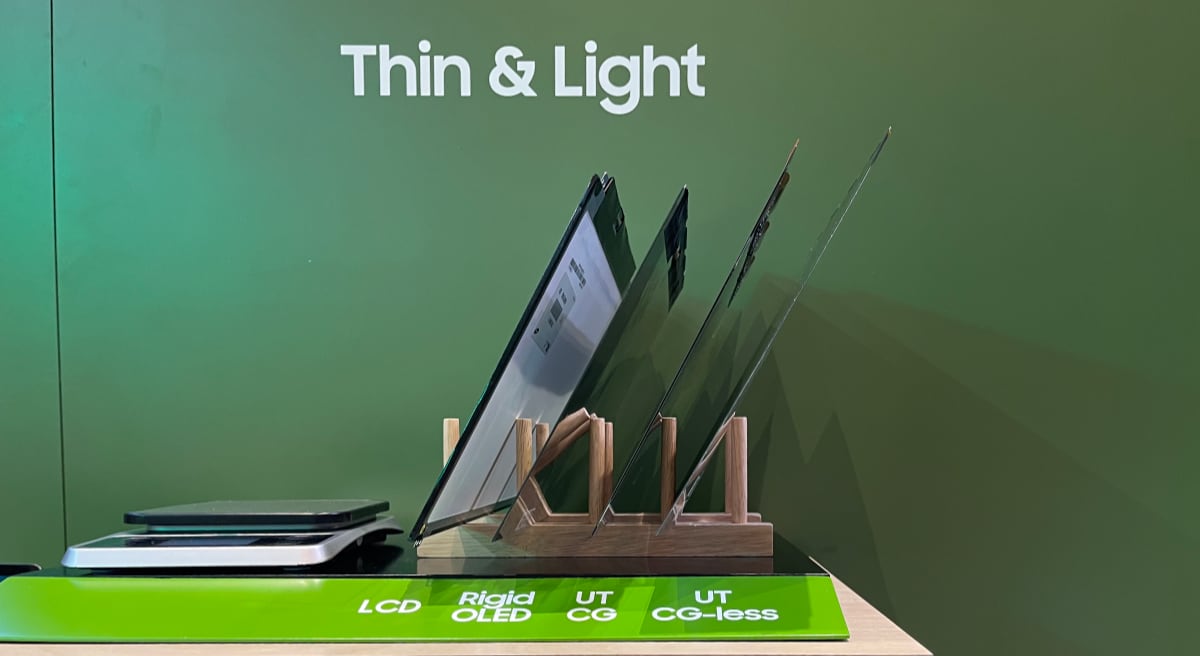
A new generation of Ultra-Thin OLED panels is coming from Samsung Display. Photo: FlatpanelsHD
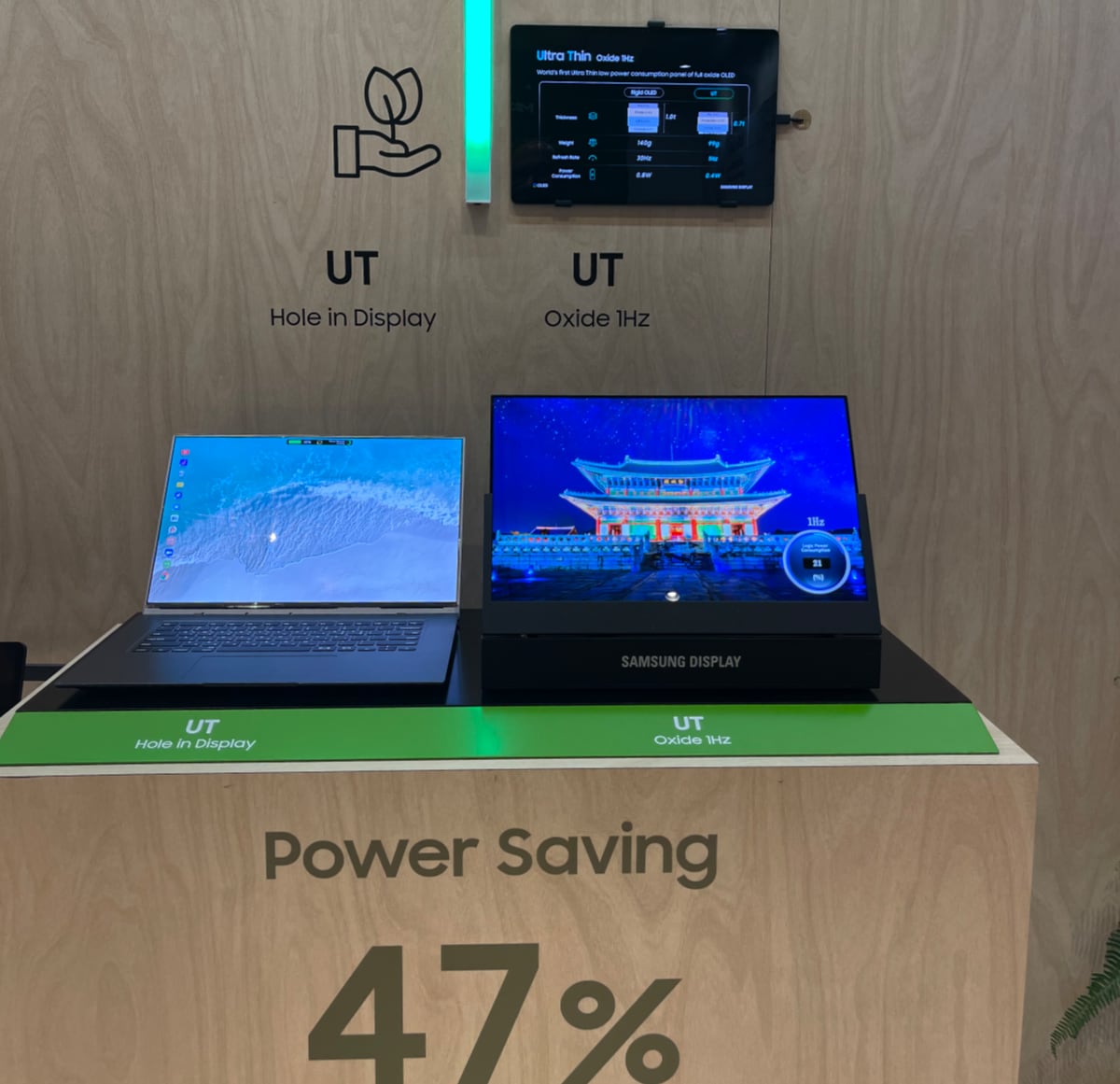
They are not only thinner but offer new features and lower power consumption too. Photo: FlatpanelsHD
We politely asked Samsung Display if they could show us the dual-stack OLED panels intended for Apple's iPad and MacBooks. They laughed, and we moved on. However, at this time, we no longer have any doubt that Apple will commence the transition to OLED in IT devices – starting with the iPad Pro – this year. Apple's move is expected to significantly accelerate the IT industry's shift away from LCD.
It was evident from the tour that Samsung Display is gearing up for this tsunami. The company is currently constructing its first 8.6th generation (8.6G) OLED plant to manufacture OLED panels for IT devices. On an 8.6G mother glass, it can produce 88 14-inch panels, up from 24 on a 5.5G mother glass, resulting in significantly reduced production costs.
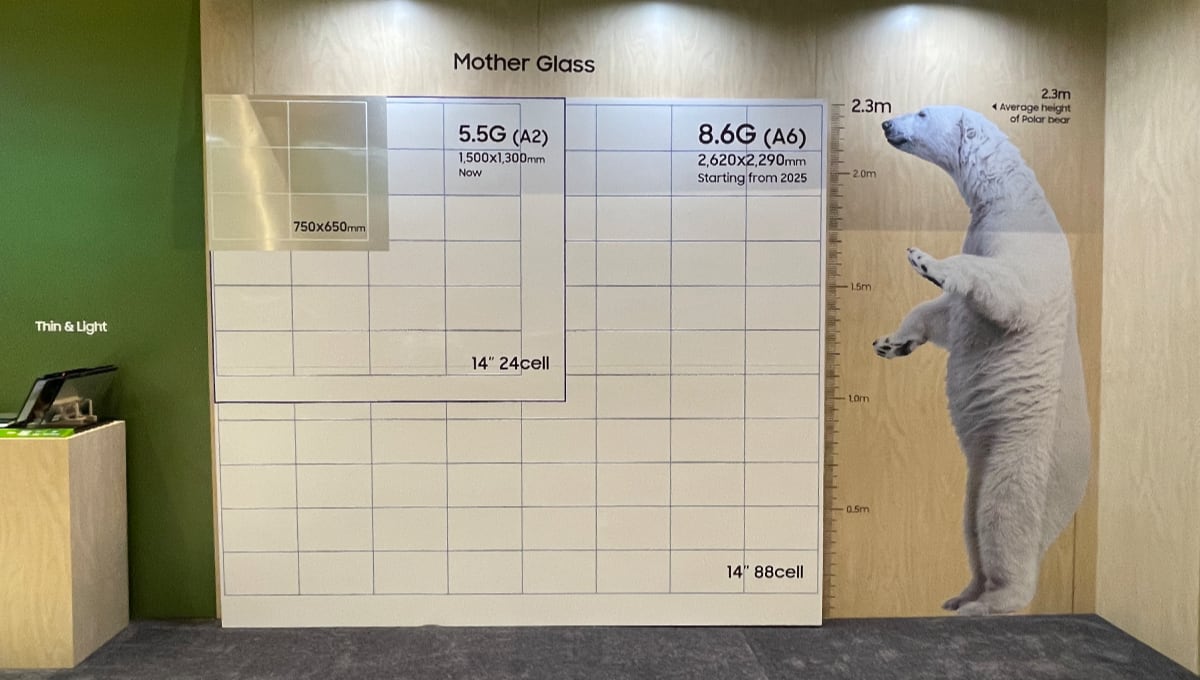
Samsung Display's upcoming 8.6G plant will bring OLED displays to IT devices Photo: FlatpanelsHD
LG Display, on the other hand, emphasized that OLED is not only better for your eyes but also for the environment, as it consumes significantly less plastic than LCD.
FlatpanelsHD recently examined some of the claims related to eye health here.
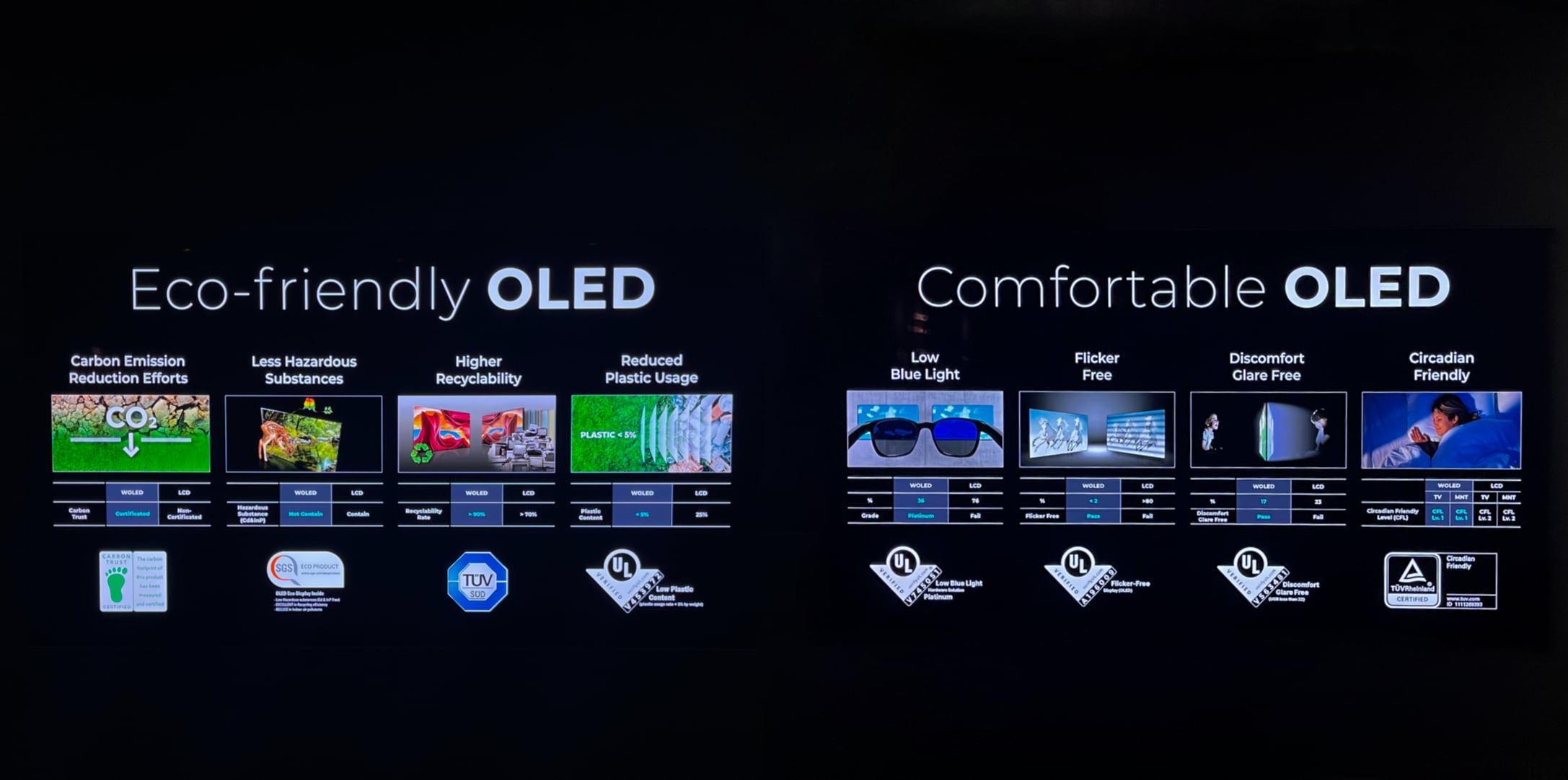
LG Display says that OLED is better for your eyes and the environment. Photo: FlatpanelsHD
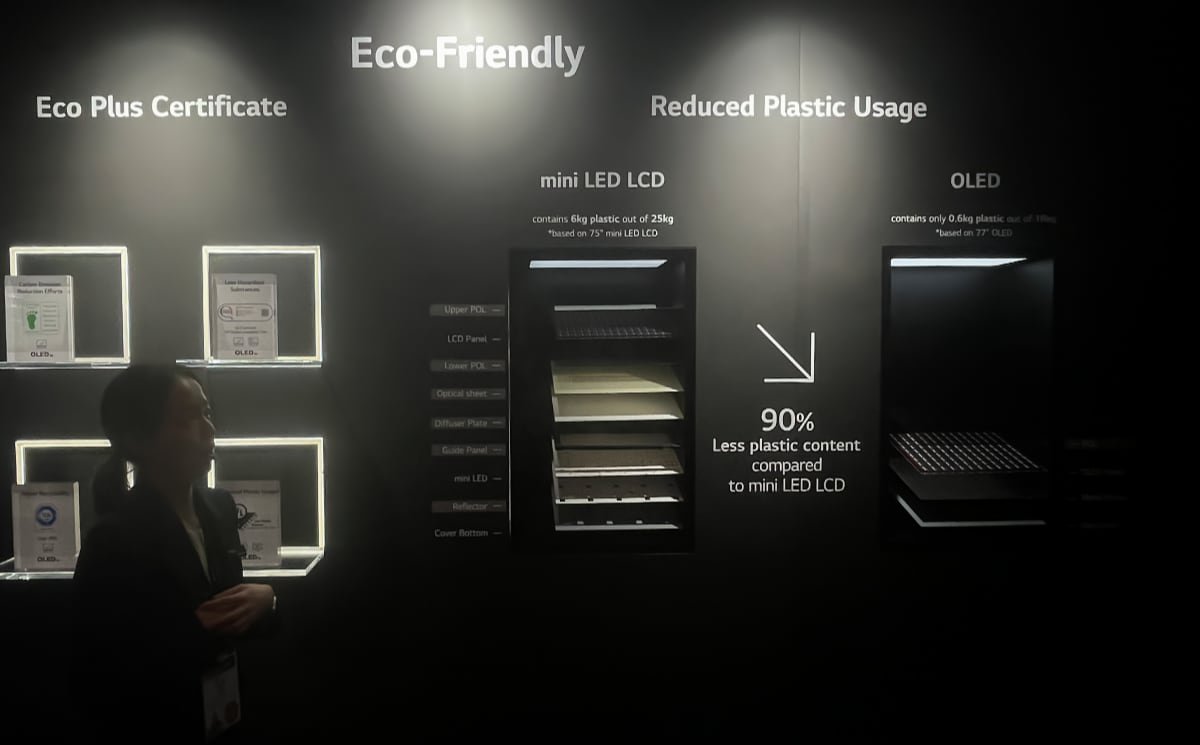
90% less plastic is used compared to miniLED LCD, according to LG Display. Photo: FlatpanelsHD
OLED in new device types
FlatpanelsHD has visited a number of Hollywood studios over the years, most recently Company 3 who claims to handle color grading for 80% of all major Hollywood movies and series. Company 3 informed us that, despite Sony's shift to dual-layer LCDs in reference mastering monitors, they still mainly use Sony's RGB OLED as their reference master monitor, having acquired all the remaining stock after Sony discontinued it.
Apart from reference monitors, Hollywood studios are increasingly using consumer TVs as extra client reference displays. Company 3 is using Panasonic (W)OLED TVs. Last year, a company called Flanders Scientific announced a 55-inch QD-OLED mastering monitor based on the 2023 panel.
At CES 2024, Samsung Display informed us that it has collaborated with Flanders Scientific to develop a smaller 31.5-inch QD-OLED version (XMP310). However, this one is limited to 1000 nits peak brightness.
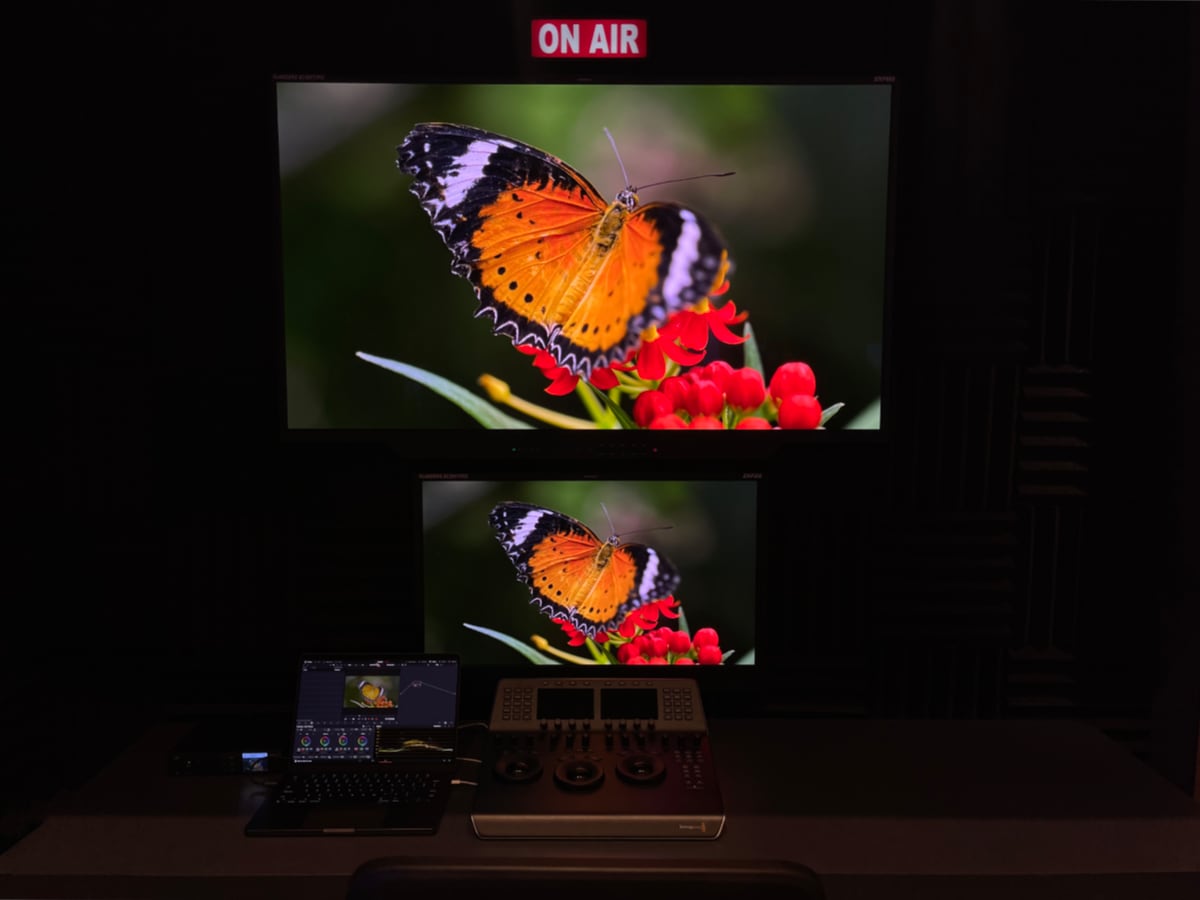
The Flanders Scientific QD-OLED mastering monitors for Hollywood studios. Photo: FlatpanelsHD
It makes sense. To our knowledge, no Hollywood studio is using miniLED LCD TVs as client reference displays inside grading suites, and there is not a lot of interest in using dual-layer LCDs as primary reference monitors. QD-OLED is gaining popularity due to its increasing brightness and the ability for filmmakers to work with an expanded color gamut and volume.
OLED is also making strides in micro-displays for headsets. While Meta currently employs low-quality LCD displays in all of its Quest headsets, the launch of Apple Vision Pro this week is set to significantly raise the bar with its two high-resolution micro-OLED displays.
Both LG Display and Samsung Display are eyeing this space, and at CES 2024 Samsung Display showcased two of its latest micro-OLED displays, also known as OLED-on-Silicon: An RGB OLED (1.03" with 3000 nits and 3500ppi) and a white OLED (1.31" with 3000 nits and 4193ppi).
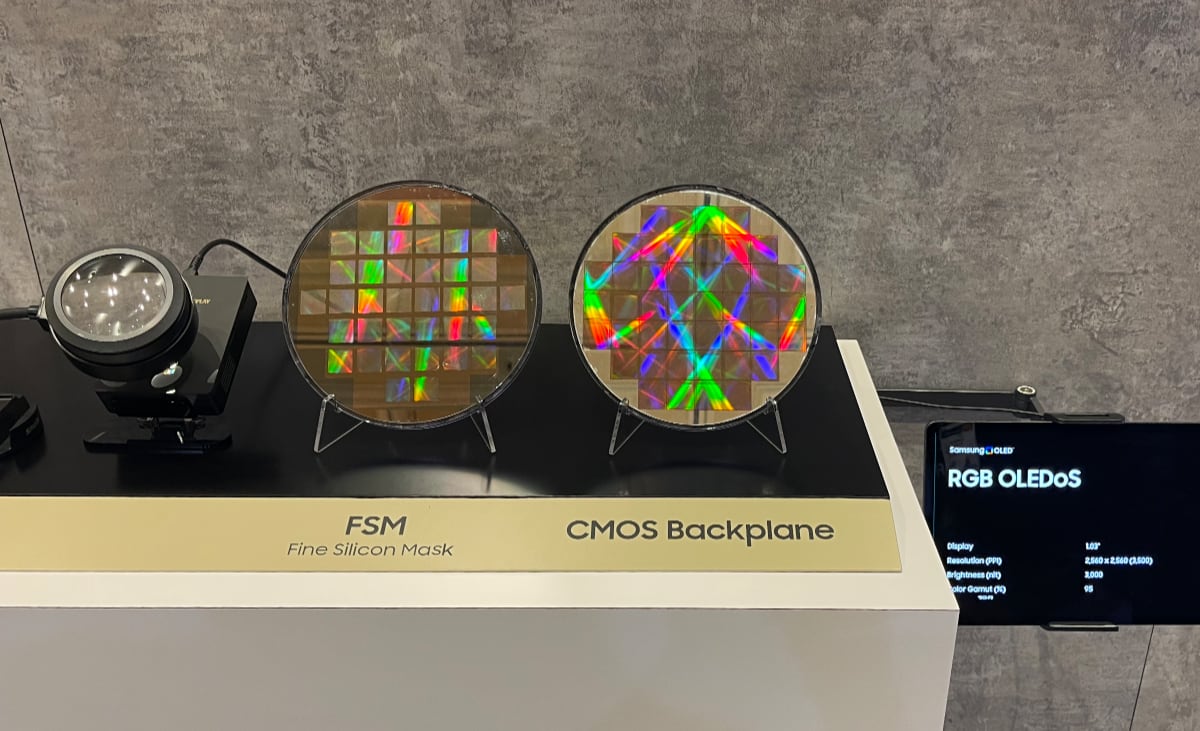
Samsung Display's latest micro-OLED displays for headsets. Photo: FlatpanelsHD
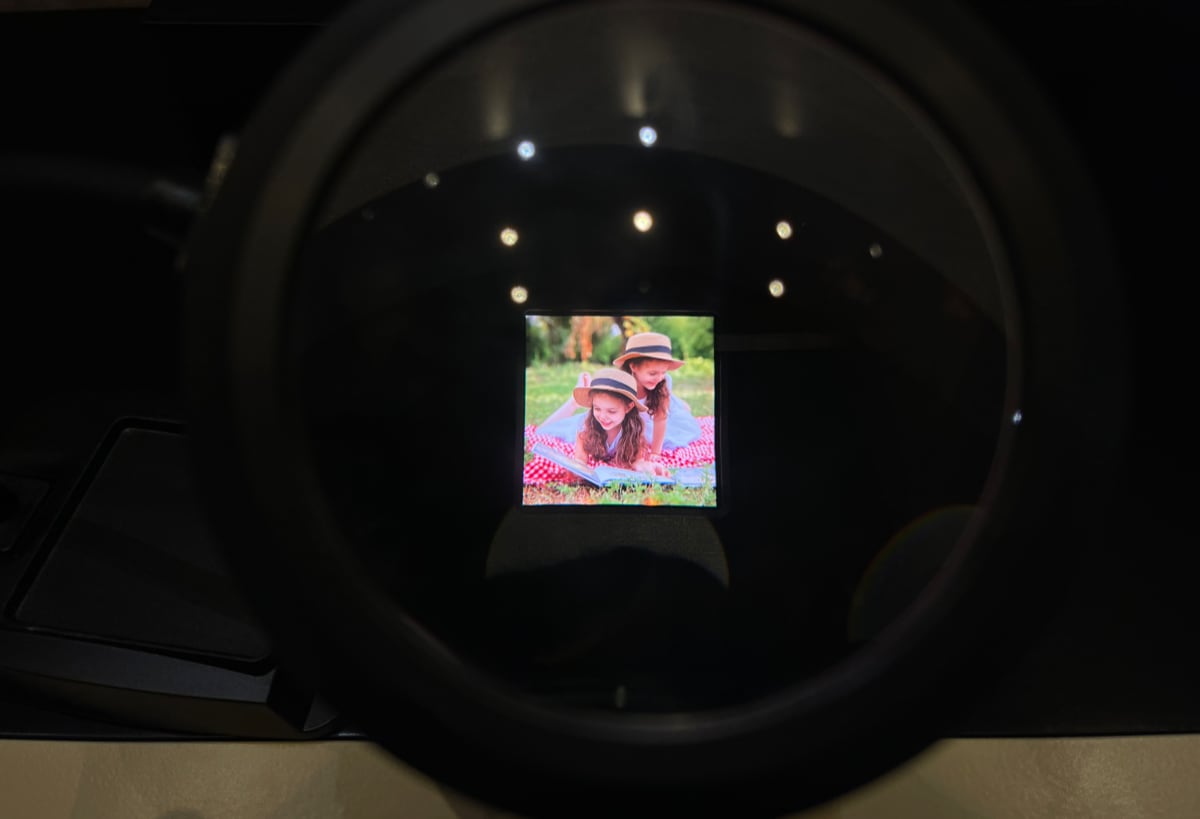
Samsung Display's latest micro-OLED displays for headsets. Photo: FlatpanelsHD
LG Display had a strong focus on transparent OLED displays. LG Electronics plans to launch a 77-inch transparent TV later this year on the consumer market, but LG Display envisions that transparent screens can serve various other purposes.
We find it a little hard to envision widespread consumer applications, but LG Display might be onto something with transparent screens in the commercial space, such as windows, storefronts, and potentially even refrigerators.
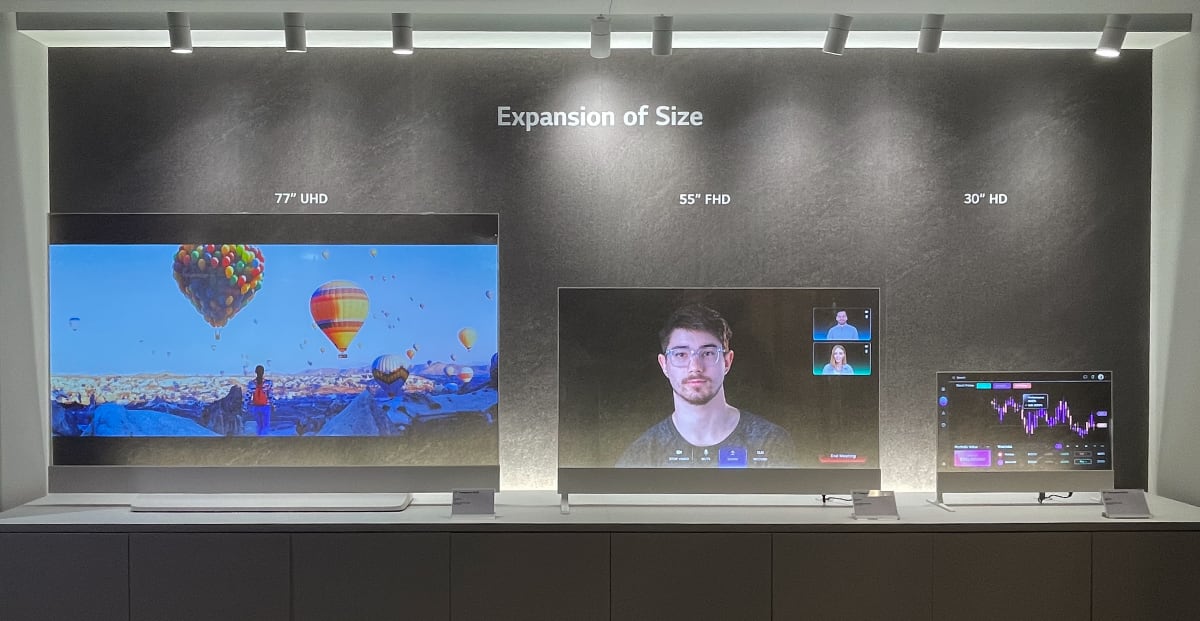
LG Display now has a whole range of transparent WOLED panels. Photo: FlatpanelsHD
OLED everywhere
OLED is gradually taking over from LCD, segment by segment. Despite the promises of micro-LED and NanoLED, it is hard to see OLED's momentum slowing down this decade.
Not covered here are all the other OLED displays that the two display makers had brought to CES; flat, curved, and rollable OLED displays for cars, an array of foldable OLED displays for handheld devices like smartphones and tablets, and much more.
In fact, during my visit to LG Display and Samsung Display at CES, I do not recall seeing any display type other than OLED, except for the LCDs that the two companies had brought in to showcase the superiority of OLED.
Also read: Did TCL just solve LCD's viewing angle problem?